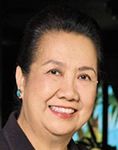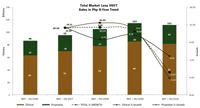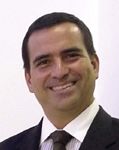Country Report: The Philippines
Pharmaceutical Executive
Once silent, an emerging market raises its voice
Despite a population of 95 million and a growing economy, the Philippine pharmaceutical industry has been largely overlooked in the past—but things are about to change. The industry has been radically reshaped in the last year, following the approval of the Universally Accessible Cheaper and Quality Medicines Act, that includes the Maximum Drug Retail Price (MDRP) scheme. After years without any regulation, the MDRP called for a 50% price reduction on 21 molecules, and introduced some systematization to drug pricing in the country.

"Bayanihan" (Working Together), artist Carlos "Botong" Francisco; commissioned by Unilab. Bayanihan is a Filipino word that refers to the spirit of communal unity and cooperation.
The law is meant to increase access to medicines for the poor, in a country where the price of pharmaceuticals is among the highest in Asia and 60% of the population has no access even to basic drugs. So far, the effects of the Cheaper Medicines Law—as it is informally called—have been negative on the pharmaceutical industry. Reiner Gloor, president and executive director of the Pharmaceutical and Healthcare Association of Philippines (PHAP), points out that "there have been no real volume increases, and particularly the molecules which have been touched, have been flat. It is still too early to say if it has really expanded the market, but it has taken [even by recognition of Department of Health (DOH)] PHP 12 billion (approximately US$270 million) out of the pharmaceutical market."

Reiner Gloor, Executive Director, Pharmaceutical and Healthcare Association of the Philippines (PHAP)
Critics claim that in addition to negatively affecting the pharma industry, the law has not truly increased access to medicines for the poor. But former secretary of health Esperanza Cabral, who was a promoter of the voluntary price reductions adopted by the industry, believes that "the industry may be right that the very poor are still not able to afford the medicines they need. However, there are many people who were struggling before—a group in between rich and poor—who could only afford some, but not all, of their medicines before the MDRP. These people have benefited from the MDRP because now they can afford the medicines they are prescribed."

Esperanza I. Cabral, M.D., Former Philippines Secretary of Health
The MDRP is the first step in increasing access to medicines. The next step is increasing social support. Currently, PhilHealth, the national insurance, covers only 38% of the population. The recently elected Aquino government, which took office on July 1, has set universal healthcare coverage by 2013 as one of its primary objectives. If it becomes reality, universal healthcare will further change the competitive landscape in the Philippine pharmaceutical industry.
The industry will also be reshaped by the prospective harmonisation on pharmaceutical regulations that is currently being discussed by the Association of Southeast Asian Nations (ASEAN). The harmonisation will provide opportunities for local Philippine companies to expand beyond national borders; it will also facilitate entry into the Philippine region for foreign pharmaceutical companies. Within the Philippines, of course, this legislation will increase competition as more products flow in. According to Edward Isaac, president of the Philippine Chamber of the Pharmaceutical Industry (PCPI)—the voice of the Philippine companies—the harmonisation will, at the beginning, "be a threat." Yet he continues, "There will be a learning curve for us, but in the long run it will be good. We believe in competition, so we are getting ready for that."

Edward Isaac, President, Philippine Chamber of the Pharmaceutical Industry (PCPI)
AN INDUSTRY ADAPTING TO A CHANGING ENVIRONMENT
Local players are indeed getting ready for increased competition. While historically, multinationals controlled 80% of the market, in recent years local companies have steadily increased their share, and locals now represent 27% of pharma business in the country. In addition to United Laboratories (Unilab), the No. 1 company in the Philippine pharmaceutical industry and a local Phillipine brand, other local players have carved out a space for themselves, including Pascual Laboratories, GX International, and Natrapharm. These companies have gained leading positions in some therapeutic areas, and are challenging multinationals.
To that end, multinationals are coping with the challenges presented by the MDRP by making modifications to existing pharmaceutical lines, and expanding their offering outside of traditional pharmaceutical products altogether, by moving into areas such as consumer healthcare and nutraceuticals. Otsuka (Philippines) Pharmaceutical, an affiliate of the Japanese company—and active in the Philippines since 1998—has adopted this strategy. As Leopoldo Dimerin, president and general manager, explains, "as a solution to cope with unpredictable scenarios, we have extended our pipeline by introducing line extensions with a new delivery system—like we did for our antiplatelet product, from a tablet to a powder preparation, for stroke patients who had difficulty in swallowing." The company continues to invest in various pharmaceutical products, and as Dimerin points out, "there will be new products and line extensions in the next three to four years and we expect them to be the growth drivers for the pharma segment." There are still a number of pharmaceutical products developed in Japan that are not yet available in the Philippines, and a key objective of the company is to expand their pharmaceutical portfolio in the coming years.

Growth from diversification
In addition to its pharmaceutical business, which currently accounts for 90% of its total revenue, Otsuka (Philippines) Pharmaceutical has diversified with the recent launch of new medical devices. The company also plans on strengthening its consumer healthcare and its nutraceutical businesses—areas that have strong growth potential—and is looking into the possibility of introducing other products to accompany their successful health drink, Pocari Sweat. Dimerin hopes these strategies will bring the company into the top 15 in the next seven to 10 years.

DPI â The New Frontier Of The Pharma Industry
Multinational companies are not the only ones who have diversified their production; local players have also branched out. Market leader Unilab—which was founded in 1945 as a drugstore, and evolved into the leading pharmaceutical company, with affiliates in Indonesia, Thailand, Malaysia, Singapore, Hong Kong, Vietnam, and Myanmar—is now looking into consumer healthcare. In the words of Joey Maria Ochave, corporate vice president of the business development group, "the basic DNA of Unilab is to provide a more affordable quality option. Initially we were offering only medicines, but we have expanded our mandate to include healthcare. We are not focusing on pharmaceuticals only. We have started going into other businesses as well."

Drilling down further between Ethical and OTC, where Ethical is now at its lowest of negative 4.19% while OTC still above the line at 2.09% [Source: IMS Philippines]
IN SEARCH OF A NICHE
While the biggest players are focusing on diversification, more nimble companies are looking for a niche in which to position themselves.
Multinationals such as Novo Nordisk and Lundbeck have chosen to focus on diabetes and central nervous system (CNS) diseases, respectively. They are prime examples of how specialization has led companies to achieve stronger positioning in the market. For instance, the vision of Lundbeck Philippines is "to become the world leader in psychiatry and neurology," while its mission is "to improve the quality of life for people suffering from psychiatric and neurologic disorders," says Joan Alvarez, country manager of Lundbeck Philippines. To achieve this result, the company has to overcome some challenges, namely the social stigmas surrounding CNS, and low patient compliance due to high medicine prices and a lack of reimbursement.
In the case of Lundbeck, specialization has proven a more successful strategy than diversification. In the words of Alvarez, "While everybody else is into diversification, we remain focused on CNS, which is believed to lead to the largest amount of debilitating disorder cases by the year 2020." In addition to a number of drugs that will be launched in the next three years, Lundbeck has recently signed an agreement with Teva Pharmaceutical Industries for the Parkinson's disease drug Azilect®, which will allow the company to further strengthen its position in the Philippines, and eventually become the preferred CNS provider in the industry.
A specialization strategy has also been adopted by some distributors. For example, Phoenix Pharmaceuticals specializes in distributing steroids, while GenAsia Biotech focuses on orphan drugs. For these distributors, specialization allows them to succeed in a market in which 85% of distribution is concentrated in the hands of the two leaders, Zuellig Pharma and Metro Drug—and where specialization is the best way to compete.

Pioneering unibranded generics in the Philippines
THE RISE OF GENERICS
While the Philippine pharmaceutical industry registered a negative growth in 2010, the generics segment has been growing steadily. Historically, generics have not been positively perceived, mainly because of lack of support from doctors. The Philippines is a prescription-driven market, where patients put utmost trust in their physicians—the doctors' non-endorsement of generics, derived from a limited promotional effort by the generics players, hampered the sector's development.
However, since 2001, the generics market has been on the rise, fuelled by the opening of The Generics Pharmacy—the first generics retail pharmacy—which started franchising in 2007. The company recorded impressive growth, expanding from one store in 2007, to more than 900 in 2010. Benjamin Liuson, president and founder of The Generics Pharmacy, believes that "the retail prices of generic medicines dropped in the Philippines because of The Generics Pharmacy. Thanks to our company, the market started following the law of supply and demand." With a forecast of 1,000 stores by the end of 2010, The Generics Pharmacy is now the chain with the highest number of outlets, overtaking the market leader Mercury Drug—which currently controls 60% of the market, but has 800 drugstores.
Amongst its target areas, The Generics Pharmacy is establishing stores in rural regions, supporting the development of pharmaceutical retailing in zones that were previously devoid of drug distribution. Historically, businesses in the industry have focused only on the three Philippine centers of Metro Manila, Cebu, and Davao. Only recently have companies started to see the potential of outlying areas of the country.
The increasing importance of the generics segment is confirmed by the number of new players that are entering the market. Sandoz, the generics arm of Swiss multinational Novartis, Pakistan's Getz Pharma, and the Taiwanese corporation OEP are amongst the fastest-growing companies in the Philippines. Several Indian generics players have also started operations in the country, including Torrent Pharma, Ranbaxy, and Lupin—the latter having acquired a 51% stake in the Philippine company Multicare Pharmaceuticals. However, Indian companies are facing additional challenges in entering the market as Filipinos are very brand conscious, and they prefer either Western (i.e. European and American) brands, or locally manufactured products.
INCREASING ACCESS TO MEDICINES: A COMMON GOAL OF THE INDUSTRY
Reduced medicine prices due to the MDRP scheme and the increased use of generics are contributing to the improved accessibility and availability of medicines. However, to truly achieve greater access to medicines, more cooperation is needed between the stakeholders.
Several pharmaceutical companies have already shown their commitment to this cause. Following the MDRP, a number of multinationals have declared 50% voluntary price reductions on key drugs. Sanofi-aventis initiated the Innovation for Life program, which reduced medicine prices for indigent patients in government-run hospitals. Novartis started a partnership with the Department of Health (DOH) to make the drug Valsartan available to public hospitals.
Janssen Pharmaceutica, a division of Johnson & Johnson Philippines, volunteered a 50% discount for products used in hospitals for open heart surgery. Jane Villablanca, general manager of Janssen Pharmaceutica, affirms that in her company, "there is a high commitment to making new innovative products available through partnering with the government and doctors, and to delivering healthcare to the people." Janssen also launched the Family Link program, which educates families of patients suffering from mental disorders, as well as a program that helps policemen deal with people suffering from mental diseases on the street. According to Villablanca, "these little steps have been accumulating for five years as small contributions in making a huge difference," and Janssen plans to continue making a difference in the Philippines.
Another company that has been contributing to improving healthcare in the Philippines is OEP Philippines (a subsidiary of the Taiwanese company Orient Europharma). OEP entered the Philippines in 2003 by acquiring Elan Pharma. The company, one of the key players in the generics segment and currently the 24th pharmaceutical company in the Philippines, launched several initiatives tailored to increasing access to healthcare.
JP Chang, general manager of OEP Philippines, explains how the company has been leveraging Taiwanese expertise to improve service delivery in the Philippines: "the insufficient budget allocated for public hospitals limits service for patients. Since the healthcare programs in Taiwan are mature and successful, we are seeking to put in place collaboration programs between the medical centres of the Philippines and hospitals in Taiwan for long term cooperation." In addition to inviting prominent Taiwanese doctors to the country to exchange knowledge and hold seminaries, OEP has also sponsored some patients to travel to Taiwan to undertake surgery in local medical centres. As Chang illustrates, "we can leverage our connection with institutions in Southeast Asia and Taiwan, and it will make us a unique generic company that better serves Filipino patients. I believe this will have some impact in the future, since healthcare should have no boundaries. Part of our obligation is to look into the welfare of the patients."
MANUFACTURING IN THE PHILIPPINES
The majority of the multinational companies present in the Philippines are engaged exclusively in sales and marketing activities. Over the years, the MNCs which had manufacturing plants in the country closed down their facilities, and began to import from corporate production centres abroad, or turn to local contract manufacturers.
One prominent example of a multinational that kept production in the Philippines is GlaxoSmithKline, the No. 2 pharmaceutical company in the Philippines, and No. 1 among the MNCs. Roberto Taboada, general manager of GSK Philippines, explains that "manufacturing is mainly about costs. There are some products where manufacturing in the Philippines provides cost advantages, compared to bringing these products from other GSK plants." GSK also exports some products manufactured in the Philippines, especially for its consumer brands.

Roberto C. Taboada, General Manager, GSK Philippines
While many multinationals abandoned the Philippines, the local manufacturing industry became livelier. The number of laboratories declined over the years, as many were not able to cope with technological advancement and increasingly stringent requirements, but the ones that survived are Good Manufacturing Practices (GMP) compliant and at par with the latest technologies.
Some of these companies specialise in toll manufacturing, as in the case of Interphil Laboratories and Hizon Laboratories, the two leading players. Hizon Laboratories is one of the oldest pharmaceutical companies in the Philippines, established in 1898 as a manufacturer for drugstores. Over the years, it survived two World Wars, a Japanese occupation, and the destruction of its factory by a fire—but these events did not stop the company from becoming one of the leading players in contract manufacturing, thanks to its focus on quality products and services.
Even with decreasing medicine prices, Hizon Laboratories has never compromised on quality. Rafael Hizon Jr, member of the third generation of the family that founded Hizon Laboratories and currently its chief executive officer, points out that "at Hizon Laboratories, quality is built into the entire system of producing each batch. Manufacturing in relatively high volumes or big batches has helped us keep our prices competitive. There should never be a trade-off when it comes to the quality of our products."
In their quest to maintain high quality, Hizon Laboratories has been following international standards not only in developing and manufacturing products, but also in testing and evaluating. As the Philippines is getting ready for the ASEAN harmonisation and the local FDA is applying to join the PIC/S scheme, the company is prepared for more stringent requirements. Hizon explains, "as part of our continuous improvement, we have already incorporated some PIC/S standards into our system so as to be in stride with the Philippine FDA. We have also adopted most of the requirements of the ASEAN harmonised standards." Hizon's clients trust the quality of its products and services, and the experience that comes with more than 100 years of history—these are the factors that allow this local player to be the giant it is today.
WHAT'S NEXT FOR THE PHILIPPINES?
The entire pharmaceutical industry in the Philippines is now waiting to see how the market will further evolve. The MDRP transformed the competitive dynamics, and further changes will soon follow as the new government seeks to achieve universal healthcare. But one thing is sure—the potential of the market. In a country of 95 million people, wherein only 30% of the population can currently afford medicines, the opportunities for future growth are significant.
Novartis is already taking advantage of this potential. The company has placed its South East Asian headquarters in the Philippines, and believes the region can be a strong epicenter for conducting research and development. "We have made significant investments in R&D over the last six months focusing on key therapeutic areas, as we see a huge potential in research. We would like to conduct trials in the Philippines for some of our future key products, especially vaccines," explains Eric Van Oppens, country president of Novartis Healthcare Philippines and South East Asia cluster head for Philippines, Singapore, Indonesia, Pakistan, and Bangladesh.

Eric Van Oppens, South East Asia Cluster Head, Country President, Novartis Healthcare Philippines
We will soon see if other companies will follow Novartis' example, and if the Philippines will play a more central role in South East Asia. It is well-positioned to do so, with a large population, widespread use of English, and a favorable investment climate. It is clear that this formerly quiet, emerging market, has finally started to raise a clamor.
This sponsored supplement was produced by Focus Reports.
Project Director: Elyse Deutscher.
Editorial Coordinator: Federica Torgneur.
For exclusive interviews and more info, please log onto Pharma.FocusReports.net or write to contact@focusreports.net
Addressing Disparities in Psoriasis Trials: Takeda's Strategies for Inclusivity in Clinical Research
April 14th 2025LaShell Robinson, Head of Global Feasibility and Trial Equity at Takeda, speaks about the company's strategies to engage patients in underrepresented populations in its phase III psoriasis trials.
Beyond the Prescription: Pharma's Role in Digital Health Conversations
April 1st 2025Join us for an insightful conversation with Jennifer Harakal, Head of Regulatory Affairs at Canopy Life Sciences, as we unpack the evolving intersection of social media and healthcare decisions. Discover how pharmaceutical companies can navigate regulatory challenges while meaningfully engaging with consumers in digital spaces. Jennifer shares expert strategies for responsible marketing, working with influencers, and creating educational content that bridges the gap between patients and healthcare providers. A must-listen for pharma marketers looking to build trust and compliance in today's social media landscape.
